Giving your lawn a nice clean-cut look requires trimming all of the edges and other areas that your lawn mower might not be able to squeeze into.
While there are a ton of ways to do this, trimmers are probably the most common tool. Trimmers with blades (brush cutters) and trimmers with string (weed eaters) are the two types of trimmer that I’m going to compare here.
Both tools have strengths and weaknesses so the deciding factor for which to use is largely the makeup of your property.
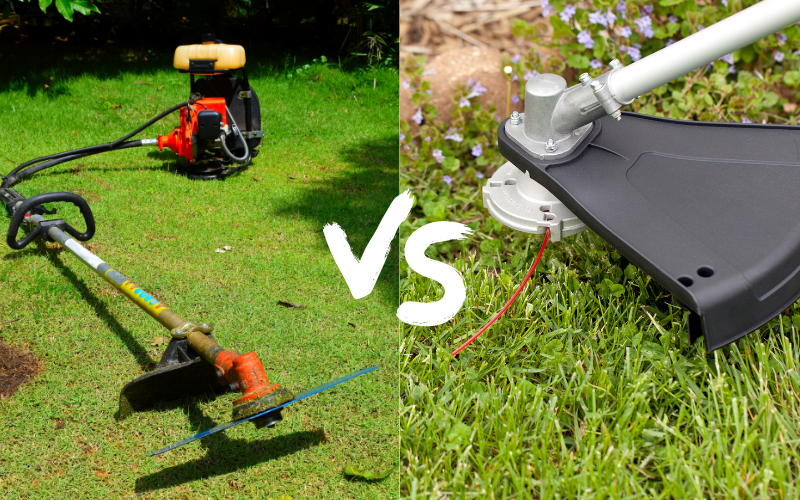
String or Blades on Your Trimmer? (Short Answer)
To decide between a brush cutter vs string trimmer you should first consider these three things: the type of vegetation you need to cut, the layout of your yard, and what obstacles your yard has.
Bladed trimmers are best for yards with tall, thick grass, brush, and saplings. String trimmers are ideal for handling lighter vegetation, obstacles, and ninety-degree corners.
Trimmer Blades vs String – Which is Better?
The trimmer blades vs string debate can’t be won because each person/property has their own requirements.
While a lot can be decided based on the type of yard in question, it isn’t the only factor to take into consideration.
I’m going to run through the pros and cons of blades and string on trimmers, and hopefully it will be enough information to judge which one is the best fit for you.
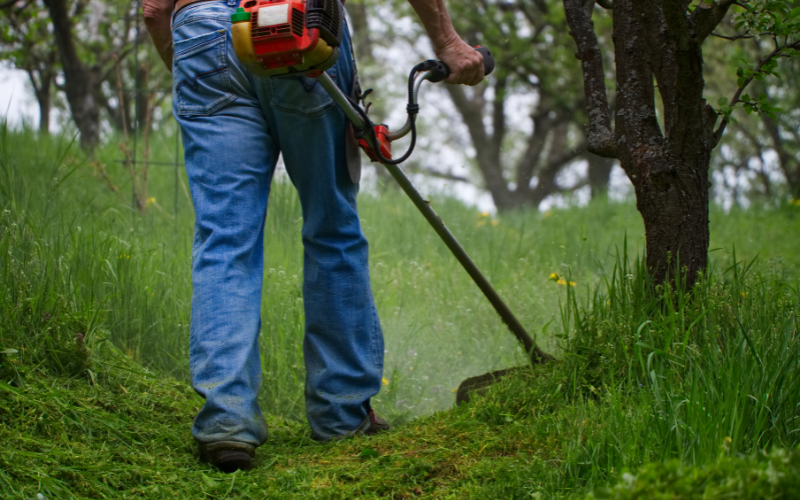
Pros of Blades
Tons of Power
Trimmer blades vs string offer a bunch more cutting power. Since they are spinning plastic or metal blades rather than string, it takes a stronger motor to make it work.
Most brush cutters are gas-powered, but there are quite a few electric options as well. With all this power, bladed trimmers are also more versatile.
Versatility
Bladed trimmers are not designed just for a lawn’s average grass and weeds. They can tackle bushes, shrubs, saplings, and all kinds of tall grasses and brush.
They have more powerful engines that allow the blades to cut through nearly all vegetation in your yard.
Delivers a Healthy and Even Cut
The cutting action of bladed trimmers closely resembles the way lawn mowers with sharp blades cut grass.
Rather than rip or tear the individual blades of grass, the tips are sliced clean off. This helps prevent damage to your lawn in the form of yellowing and disease.
Cons of Blades
Heavy
Along with added engine power and durable blades comes a good deal of extra weight.
Sure this might suggest that the tool is well built, but this also means that it’s a pain to lug around a big yard.
Though this isn’t a deal-breaker by any means, it is something worth thinking about.
Awkward in Tight Places
Rigid blades can also make it difficult to get at that pesky grass hiding in the corners of your yard.
This is especially true for ninety-degree angled corners. As you can imagine, a blade rotating in a circular motion and tight corners don’t match up very well.
This issue can also result in damaging some of the structures on your property if you aren’t careful.
Potentially Dangerous
The reason I say that brush cutters can be potentially dangerous is because you can experience kickback while using them.
Known to happen in brush cutters and other saw-like tools, kickback occurs when blades get pinched or run into something too thick to cut through.
This can cause the material that is being cut or the tool to be thrown back at the user.
With practice, you can protect yourself from potential kickback, but it can be very unexpected.
Expensive
Lastly, price is an important thing to consider when comparing a brush cutter vs string trimmer.
Bladed trimmers are usually quite a bit more expensive than the average string trimmer. This is because of the added power, and wider range of capabilities.
Though not all bladed trimmers or brush cutters have the option to trim with string, they can all handle tougher vegetation.
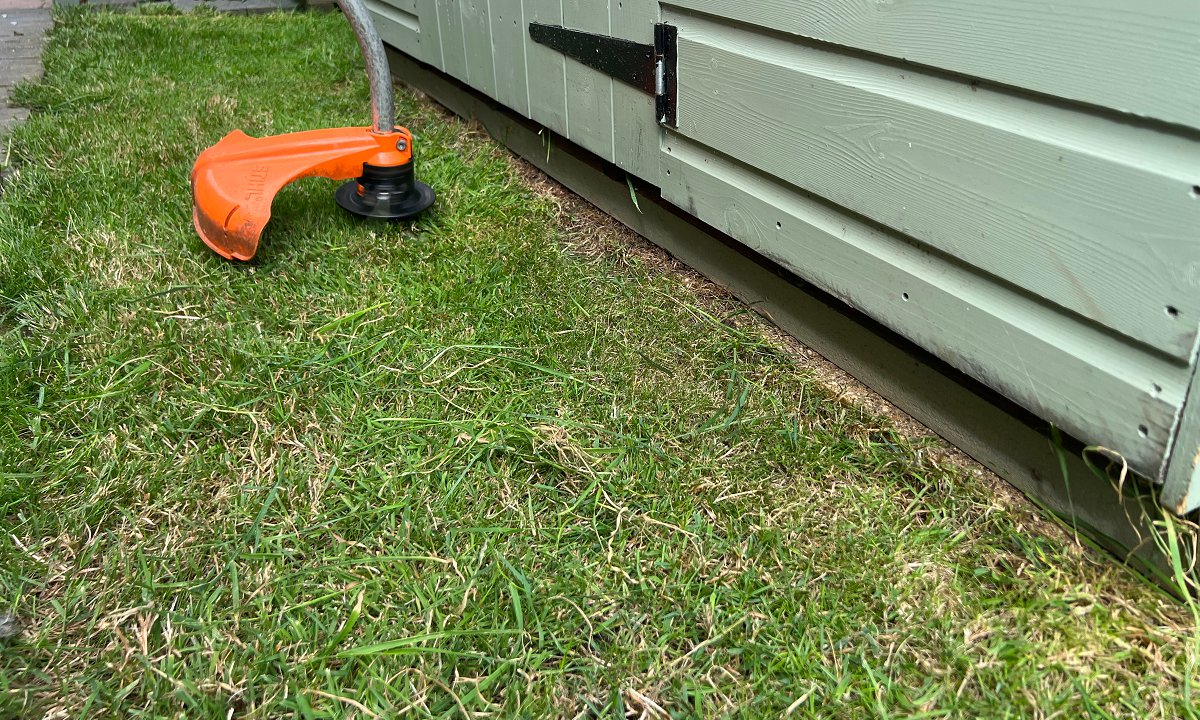
Pros of String
Lightweight and Easy to Use
Without many metal components, string trimmers tend to be super light and easy to carry around.
This is especially true for electric string trimmers. Still, even gas trimmers are lighter than gas-powered bladed trimmers.
If you have a pretty big yard with a lot of edges that need cleaning up, having an easily maneuverable tool is a huge advantage.
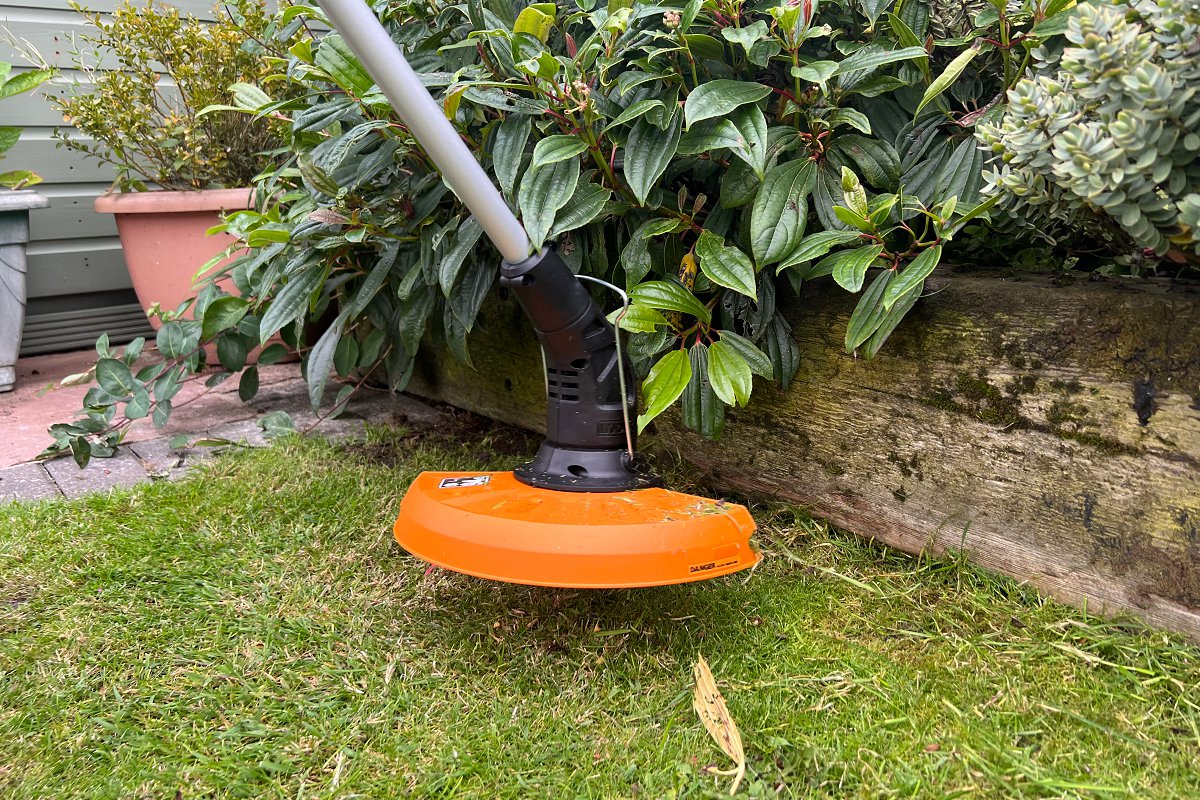
Reaches Corners and Tight Spaces
Spinning flexible string rather than fixed blades, you get a bit more leeway in tight spaces with string trimmers.
The same is true for obstacles that you need to get up close and personal with to trim every blade of the surrounding grass.
Though string trimmers can chew up wood and plastic, it’s a bit easier to avoid compared to bladed trimmers.
More Affordable
There is a huge range when it comes to string trimmer prices. But as a whole, they are typically quite a bit less expensive than bladed trimmers or brush cutters.
Since string trimmers usually run on smaller engines or with smaller batteries, production costs are lower.
Cons of String
String Breaks Often
One of the most annoying parts of using string trimmers is constantly having to feed or respool line.
Breaking the string on your trimmer can’t be avoided, but there are some things you can do if it seems like your trimmer line is always breaking.
Still, even if you’re super careful, string needs to be replaced more often than blades need to be sharpened or changed.
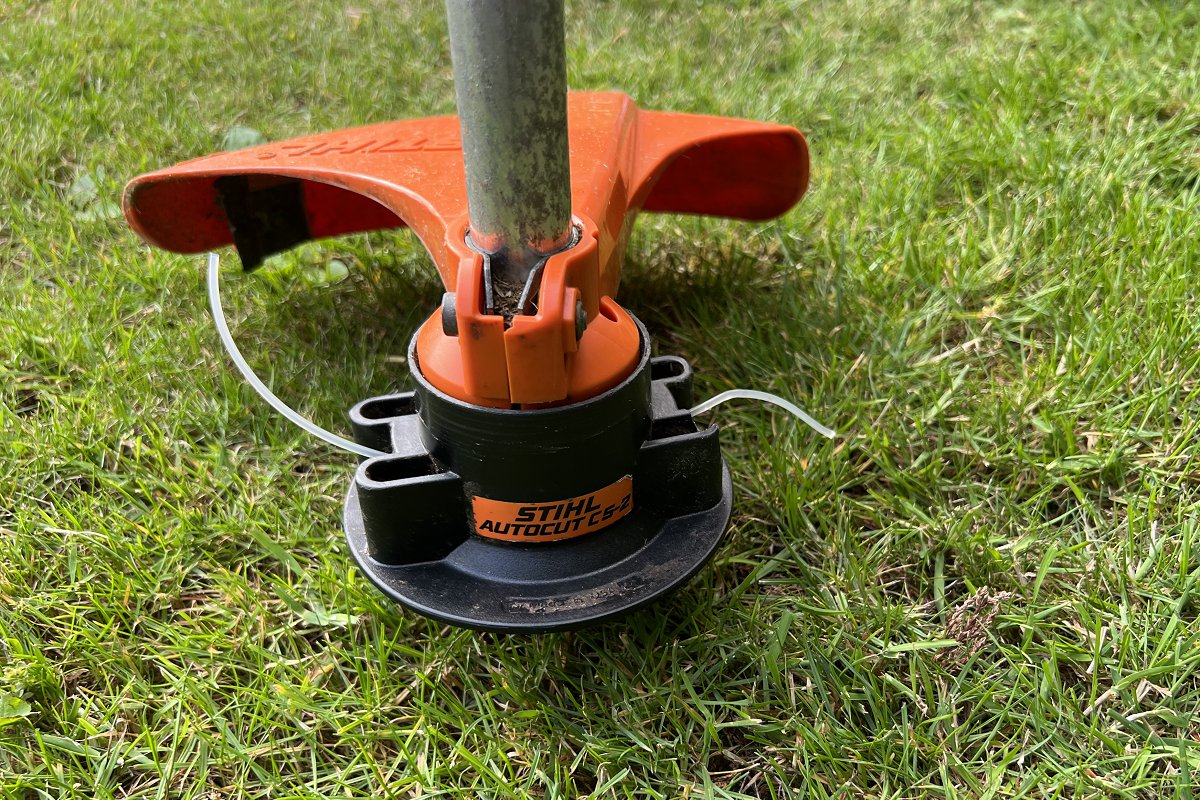
Less Powerful
With a lighter build comes decreased engine power. If you have a straightforward yard without any rogue brush or tall grasses, this might not matter to you.
However, if you have to go up against tougher patches of vegetation, you might run into some trouble.
Can Damage the Grass
The whipping motion of string trimmers can end up tearing grass rather than slicing clean through it.
As I mentioned earlier, this same thing can happen when your lawn mower’s blade gets dull, and is not something that you want to happen. Getting a clean cut on your lawn really helps boost its health.
Also, it’s pretty easy to “scalp” patches of your lawn with string trimmers. If the angle you hold them at is wrong, you can end up shaving the grass all the way down to the ground.
This doesn’t look good at all and can damage an otherwise healthy lawn.
When Blades are a Good Option
After weighing the advantages of weed trimmer blades vs string, blades end up being a great option when you need the ability to cut through vegetation that isn’t just grass.
Brush cutters can easily clear out larger unruly areas and are a more specialized tool (which is reflected by their pricing).
Offering more power and versatility, bladed trimmers are useful but could be overkill in some situations.
When String is a Good Option
Use of a string trimmer vs plastic blades or even metal blades is best when all that needs to be trimmed is grass.
You won’t get worn out carrying a string trimmer like you would with a bladed trimmer. You’ll also be able to navigate around all of your yard’s obstacles without any issues.
So, if you just need to clean up the edges of your house’s yard or boulevard, string trimmers are perfect tools for the job.
Can You Use both Blades and String on Any Trimmer?
No, you cannot use both blades and string on all trimmers. Most trimmers are built for either string or blades. This is why the brush cutter vs string trimmer debate exists.
Usually, you can’t get both options in the same tool. However, there are a handful of models that offer this 2 in 1 feature.
On these models, you can switch out the trimmer line spool for blades. Although, as mentioned in the pros and cons, this feature will definitely cost you a pretty penny.
But in my opinion, there aren’t too many people that really need both choices. Usually, a yard seems to be better suited for either a string trimmer or a bladed trimmer.
Conclusion
Both bladed trimmer and string trimmer owners rave about how much they use these tools to keep their lawns looking sharp.
You can’t go too wrong when choosing between the two, but there is likely one that fits the job description better than the other.
Think about what parts of your yard need special attention and you should be able to pick a clear winner. Your lawn will thank you later.


Thanks for taking time to write the review, it’s been helpful and appreciated.
Bob.
Glad you found it useful, Bob 🙂
Thanks for leaving a comment.
Tom.
I’ve never used a strimmer. My husband always looked after the lawn but I’m doing it because he can’t do anything heavy now. I’m looking to get a new one because ours is ancient. Is it only certain ones that use a heavy duty cord? I’d like a bladed one but it might be too heav.
Hi Margaret,
I think your best option would be to go for a lightweight battery strimmer. Not only are they a lot lighter, but you don’t need to drag a power cord around your garden. Corded trimmers are really a thing of the past. You can still buy them, but because batteries these days are so good, there is little need for cables anymore.
As for a bladed design, I would only suggest that you try using a strimmer with plastic blades and definitely not metal blades. Metal blades are very unforgiving and require quite a bit of arm strength. If you catch a tree root, the trimmer could kick out with a metal blade and be pretty dangerous.
Take a look at DeWalt or Ryobi. They make some nice lightweight battery strimmers.
Thanks for the question.
Tom.
Excellent article. I found this helpful. I had a string trimmer. It keeps breaking after a short time. Thank you for this information. I appreciate it.
Hi Sharon,
Glad you enjoyed the article!
Thanks for stopping by 🙂
Tom.